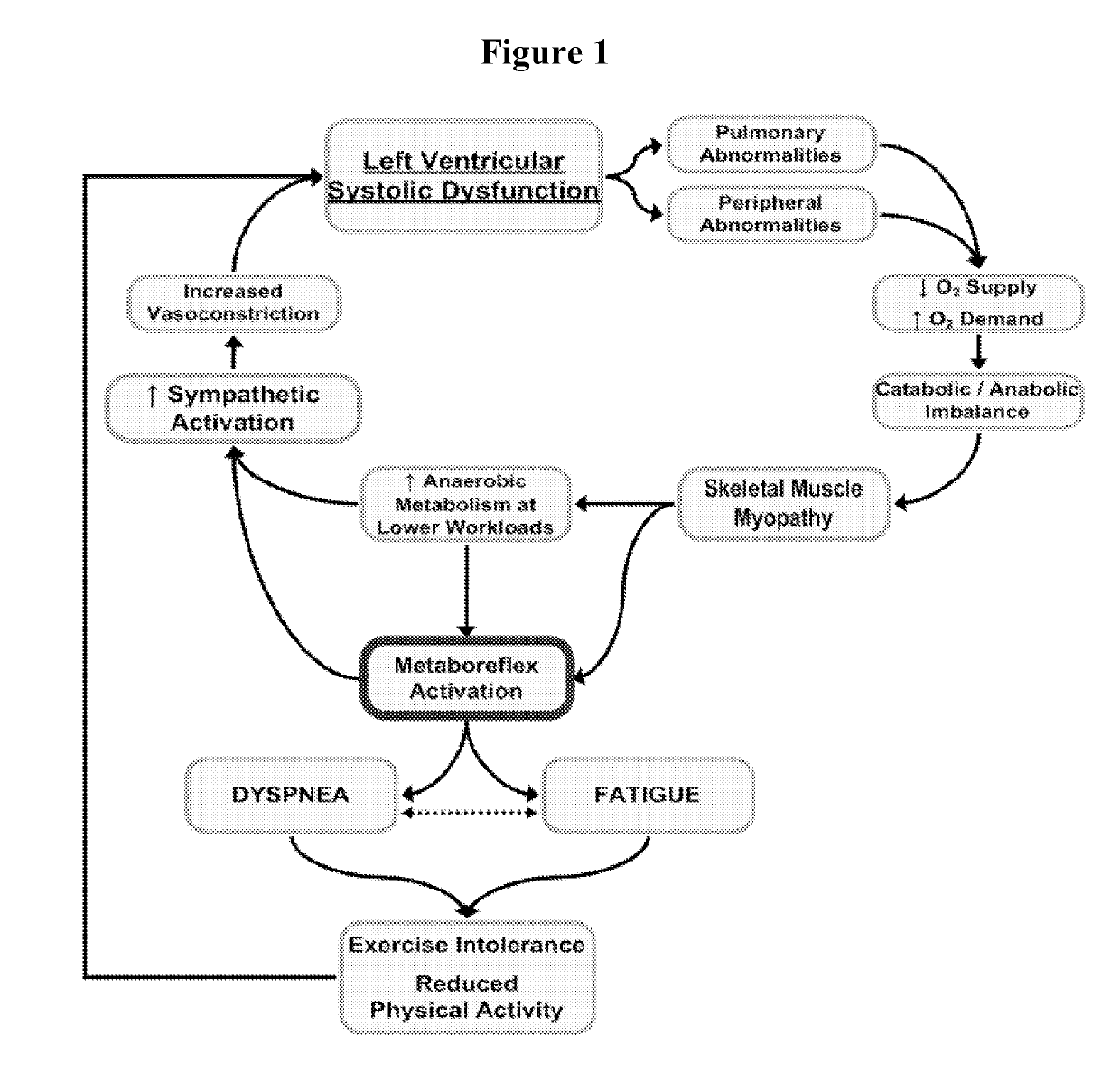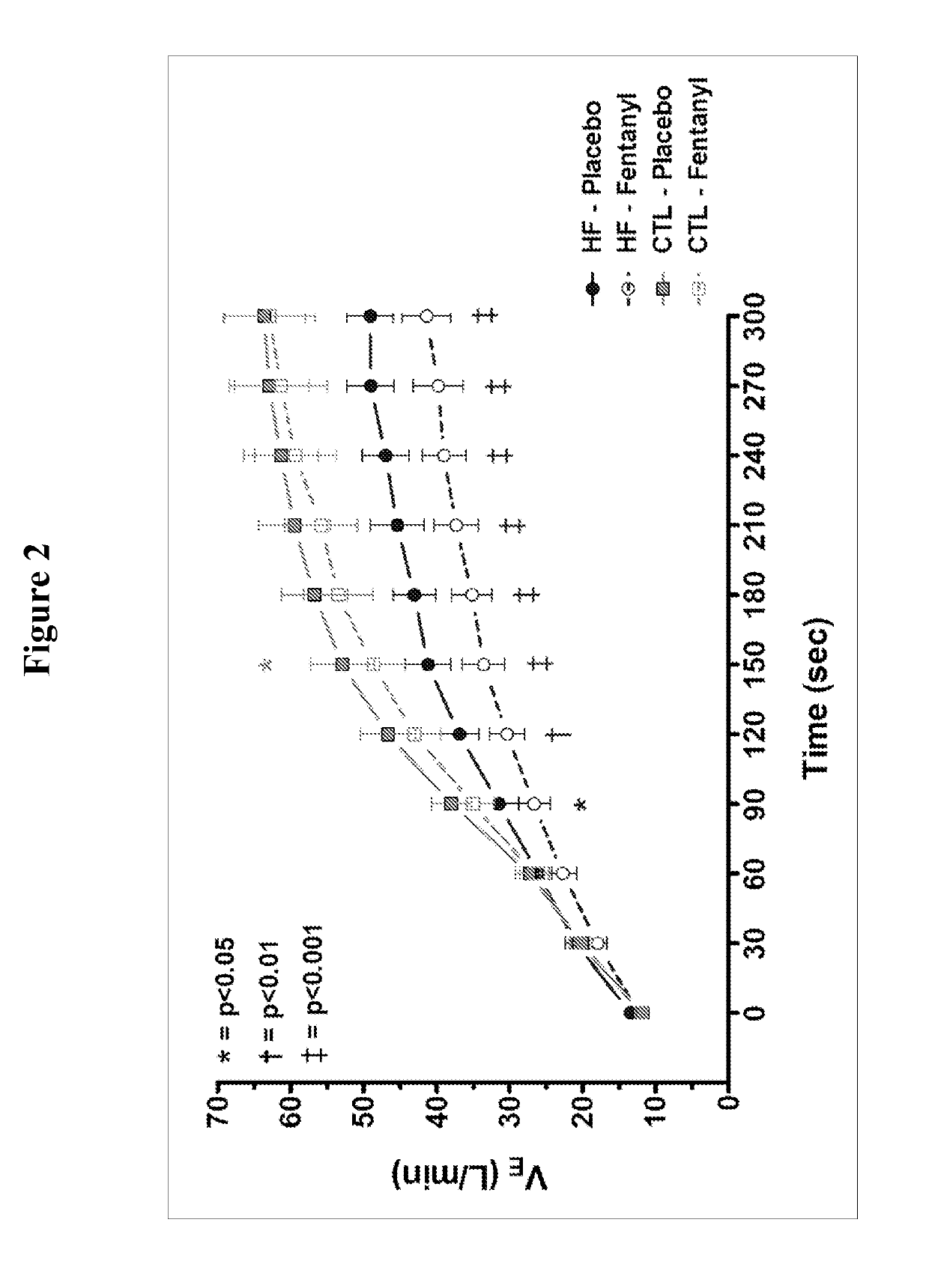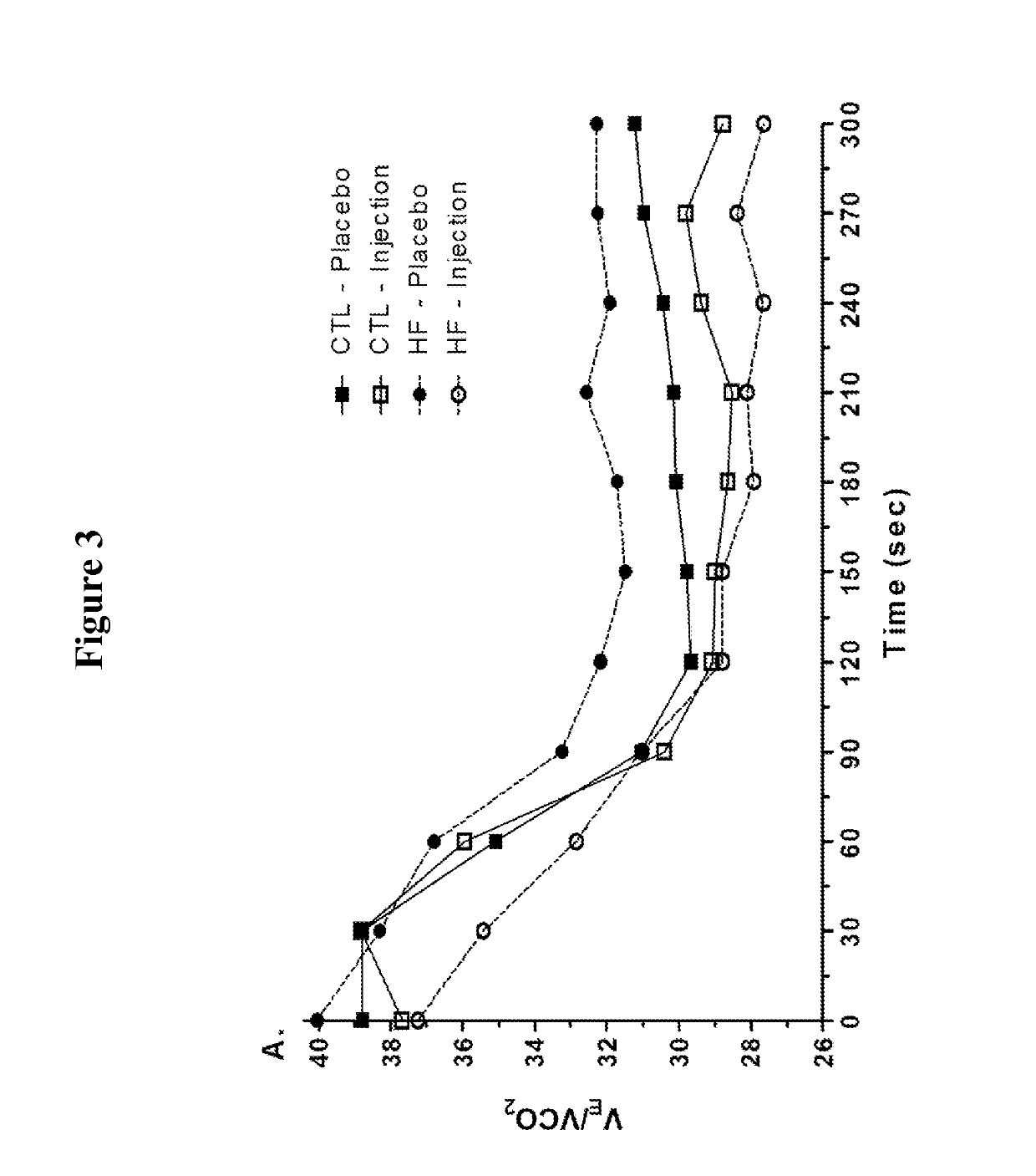Modulating afferent signals to treat medical conditions
a technology of afferent nerve signals and medical conditions, applied in the direction of drug compositions, artificial respiration, therapy, etc., can solve the problems of excessive sympathetic activity, disproportionate increase in breathing and sympathetic activity to actual stimuli, etc., to reduce symptoms, improve health status, reduce or block nerve signals
- Summary
- Abstract
- Description
- Claims
- Application Information
AI Technical Summary
Benefits of technology
Problems solved by technology
Method used
Image
Examples
example 1
Muscle Afferents Contribute to Ventilatory Control During Exercise in Heart Failure Patients
[0037]Reduced ventilatory efficiency is a hallmark of heart failure and is linked to disease severity and a poor prognosis. The following was performed to determine if neurologic feedback from locomotor muscles is a mechanism responsible for altered ventilatory efficiency and to determine the impact of reducing or blocking locomotor muscle afferent feedback on ventilation (VE) during exercise in heart failure patients.
[0038]Briefly, five heart failure patients with reduced systolic function (age=60±11 years, height=1.81±0.03 m, weight=94±7 kg, ejection fraction=27±5%, NYHA I-III class=2±0) underwent two 5-minute submaximal steady-state exercise sessions at 60% peak work (placebo (PLA) vs. regional neural blockade via intrathecal injection of fentanyl (RNB)). Using aseptic technique and local anesthesia, 50 μg of fentanyl was administered via a 22 g Whitaker needle. Breath-by-breath measures i...
PUM
| Property | Measurement | Unit |
|---|---|---|
| current intensity | aaaaa | aaaaa |
| frequency | aaaaa | aaaaa |
| current intensity | aaaaa | aaaaa |
Abstract
Description
Claims
Application Information
 Login to View More
Login to View More - R&D
- Intellectual Property
- Life Sciences
- Materials
- Tech Scout
- Unparalleled Data Quality
- Higher Quality Content
- 60% Fewer Hallucinations
Browse by: Latest US Patents, China's latest patents, Technical Efficacy Thesaurus, Application Domain, Technology Topic, Popular Technical Reports.
© 2025 PatSnap. All rights reserved.Legal|Privacy policy|Modern Slavery Act Transparency Statement|Sitemap|About US| Contact US: help@patsnap.com



